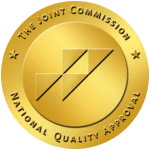Addiction Information in the Workplace
Addiction In The Workplace
Information for Employers and EAPs
Overview
Substance abuse is common in the workplace, and the costs of substance abuse are therefore high for employers. In addition to the obvious factors like greater absenteeism, decreased performance, and reduced productivity, substance abuse by employees also leads to greater health care expenses for the firm. In addition, safety issues and other risks for employers can increase workers’ compensation and disability claims. There is also the less quantitative detriment of employers and co-workers having to deal with the consequences of sharing a workplace with someone whose performance on the job will inevitably be impacted by their use of drugs or alcohol.
It is thought that greater than 70% of all substance abusers in the US hold down at least one job. In addition, studies support the statistic that 25% of American workers between the ages of 18 and 34 will use illegal drugs at some point over the course of a given year.
Addicts as Employees
- Display reduced productive compared to the average worker
- Miss several workdays for every one that is missed by other employees
- Are more likely to cause accidents in the workplace that injure themselves or others
- Are more likely to ask for worker’s compensation at some point
- Accrue employer-covered health care costs that are higher than the average employee
Signs of Addiction In An Employee
Addicts are experts at manipulation and hiding their addiction. This is one reason why they can be tough to spot in the workplace, even when managers and peers have been educated properly and are thus aware of the issue in general. There are still often a number of visible signs that suggest an employee may have a substance abuse problem. Especially if an employee is displaying two or more of these behaviors the likelihood that the individual is abusing drugs or alcohol is high.
Some of the signs of substance abuse are:
- Frequent tardiness
- Absences beyond average for which their is no good excuse
- Overreaction to criticism when confronted
- Inconsistent performance (e.g., bad on Monday, good on Tuesday)
- Frequent minor accidents (dropping things, tripping over objects, etc.)
- Unusual physical symptoms or behaviors (nervousness, unsteady gait, hyperactivity, weight loss, sweating etc.)
- A gradual – or sometimes abrupt – lack of concern over personal appearance and hygiene
- Low energy in the morning and lower levels of productivity when first reporting to work
- Bags under the eyes or bloodshot eyes from insufficient sleep
If you are an owner or manager and these signs are present, or you suspect the employee is abusing drugs or alcohol for other reasons, you may want to call them in for a private consultation to see if you can help. Be sure to follow your company policies on this issue if they exist.
For co-workers the issue becomes more complicated. No one wants to be responsible for someone losing their job, especially if it is someone they consider a friend, or a person many people like. And no one wants to be known as a tattletale or snitch either. The co-worker may have to continue to work with that employee and their friends. But workers may have no choice but to turn a substance abusing co-worker in if that person won’t admit there is a problem. In any event, someone suspected of being an addict should be confronted and given a chance to seek help on their own first before any further action is taken.
Dealing With Addiction In The Workplace
In order to effectively address the problem of substance abuse by employees, employers should understand addiction, the prevalence of substance abuse among working adults, and the costs related to substance abuse. Substance abuse can be treated and resolved, especially when it is perceived as a chronic disease.
Reducing the prevalence of employee substance abuse can help employers improve productivity, reduce workplace injuries, and decrease health care costs.
Employers can address substance use and abuse in their employee population by:
- Implementing written substance abuse policies including drug-free workplace policies
- Utilizing EAP services to help employees with substance abuse and making sure employees are aware of these services
- Offering health benefits that provide comprehensive coverage for substance use disorders, including aftercare and appropriate counselingReducing stigma in the workplace regarding substance abuse
- Educating employees about the hazards of substance abuse through Employee Assistance Programs (EAPs), company wellness programs, and Work/Life programs
- Utilizing EAP services to help employees with substance abuse and making sure employees are aware of these services
Unmet Treatment Needs
It is clear that a significant proportion of individuals with substance use disorders do not receive the care they need. Research shows that 47% of men and 41% of women in need of treatment for illicit drug abuse are not treated. Interestingly, this unmet need is not limited to the uninsured as one might suspect. Many individuals in need of substance abuse treatment have private insurance.
This inability to obtain treatment often results from a lack of education about the treatment that is available, in addition to the issue of insufficient resources to pay for treatment. It’s also very common for people with addiction to be in denial about their need for treatment. Individuals who do not receive effective care can be a source of high costs for employers.

